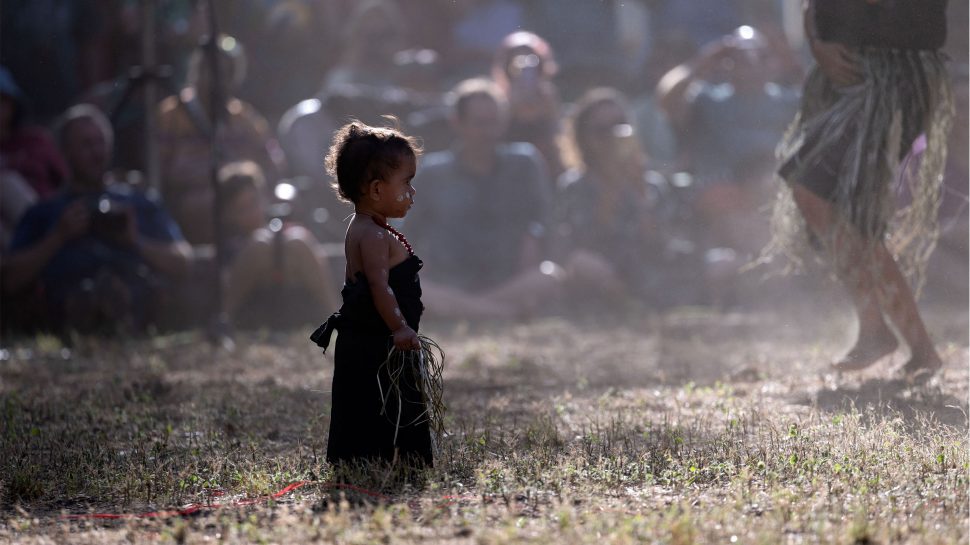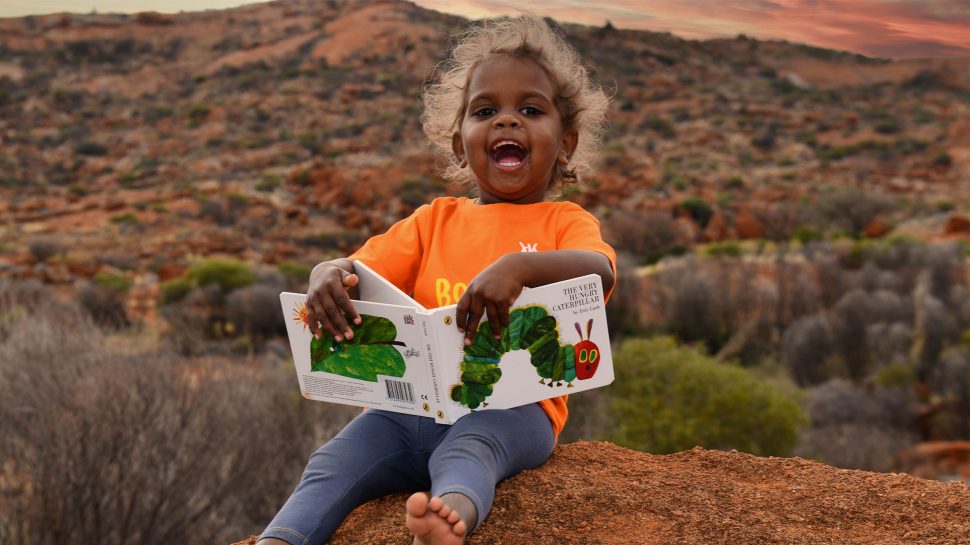Wayne Quilliam: Life through his lens
Award-winning Indigenous photographer Wayne Quilliam talks about storytelling, being an ambassador for the Indigenous Literacy Foundation and his recent work with Australia Post.

Wayne Quilliam curated the Connection experience, a collection of works from Australia’s most celebrated established and emerging First Nations artists.
There are about 500 remote Indigenous Communities in Australia.
And Wayne Quilliam reckons he has been to every single one of them.
As one of Australia’s most respected Indigenous photographers, Wayne has spent the past 30 years visiting, living and working in First Nations Communities. And now he’s making the rounds again.
This conversation took place the day before he flew to Shark Bay in Western Australia, a Community he had first visited 25 years ago. To say he was excited about the trip would be an understatement.
“I was in Geraldton (WA) about 25 years ago when I got a message from a young Aboriginal man named Capesy who was starting out as a tour guide,” Wayne says. “He asked if I would photograph him in Shark Bay for his marketing material. I loved his commitment to success so I did it for free.”
“I'm not just excited about seeing my friend again tomorrow but also to share Country and stories with him again. Nothing excites me more than that.”
This from a photographer who has curated over 300 international exhibitions, been recognised with a Walkley Award and a Human Rights Award and been nominated as a Master of Photography by National Geographic.
Those accolades are recognition of Wayne’s talent and a reflection of his deep connection to people, culture and Country. And that connection is what truly matters to him.

Wayne reckons he has photographed every remote Indigenous Community in Australia. Image by Wayne Quilliam.
Answering the call of Country
Wayne was born in Tasmania, a “land of strength and resurgence.” When he turned 15, he decided the world was too big and beautiful to hold at arm’s length. He also wanted to learn more about his culture. So he joined the Australian Navy.
“That’s when the big adventure began,” he chuckles. “There were two other Aboriginal sailors in the Navy and they told me about their Country. That was a catalyst to wanting to know more about my own Country and culture.”
“My nan, in particular, wouldn't talk about our culture because it was forced out of her as a child. It was my grandfather who taught me about connection to the land and how we look after it. He wasn’t Aboriginal but he knew the stories well.”
While stationed in Hong Kong, Wayne bought his first camera. This was the next turning point in his life–he just didn’t know it yet. A few years later, he left the Navy for an Aboriginal newspaper, the Koori Mail.
“Then one day I decided I needed to know more about my culture so I threw my dog in the back of an old van and we took off for about three or four years just travelling around Australia, living on different people's Country and visiting Communities. The first ones I visited were in Victoria–along the Murray River through Echuca and Swan Hill up through into Mildura.”

Wayne takes his time to observe and listen to people’s stories so he can capture their essence and not just an image. Image by Wayne Quilliam.
Capturing the soul of a story
Those early years in the outback inspired Wayne to greater levels of passion and commitment in photography. A self-taught photographer, he prioritises the visual story over technical knowledge.
“I am a storyteller,” he says simply. “And I’m fully immersed in every story. I want to know who every single person is, what they do and why they do it. I take the time to listen and wait until we form a relationship before I get my camera out.”
“When I’m on someone else's land, I make sure they know why I'm there. I wait until I'm accepted, until I have the authority to do what I’ve asked permission to do. That's the biggest difference between working on Country and on a commercial shoot.”
“I'm not one who bursts into an area, photographs a million shots and goes, "Well, here are your photos." It's not how I work. I hear the image. So when people say there’s an essence in my images it's because those I photograph want to share their essence with me.”
“I teach my 14-year-old daughter, Tanisha, all this when she comes on shoots with me and that's how she's learning culture. It's a beautiful thing to do this work.”

Wayne is an Indigenous Literacy Foundations ambassador, a role he holds with great pride. Image by Wayne Quilliam.
Championing literacy and learning in First Nations Communities
Wayne was shooting for the Fred Hallows Foundation in Central Desert in the Northern Territory when the Indigenous Literacy Foundation (ILF) asked if he could do some work for them there. And that was the start of a 20-year relationship.
In May 2022, that relationship culminated with Wayne being appointed as an ILF ambassador–a role that he holds close to his heart. He says, “It’s a privilege. I now have the opportunity to publicly share the ILF’s incredible work and this makes me very happy. My generation didn’t have access to literacy. A lot of language was torn from our Communities.”
“Being able to educate our kids and have literacy programs that teach them not just English but also language, is incredible because it's a continuity of culture. Many of these kids will go on to pursue higher education. And many will return to Country to help their own Communities.”
Wayne is a voracious reader himself and always has a book tucked into his camera bag, especially when he’s boarding a flight to areas where there’s no WiFi connection. A book, he says, will never let you down.

Wayne with Cindy Manfong from the ILF and the Australia Post team at the Katherine Post Office in the Northern Territory. Image by Wayne Quilliam.
Revisiting Indigenous Communities with Australia Post
Another Australian organisation that Wayne holds in high regard is Australia Post. We partnered with the ILF in 2020 and have since delivered over 388,000 culturally relevant, high-quality books to children in 453 remote First Nations Communities.
We also support the ILF’s CREATE program, to assist with the publishing of books created by students in remote Communities–many in First Languages.
In March 2023, Australia Post engaged Wayne to help tell our story of working with the ILF in remote Communities. This assignment took him to Binjari in the Northern Territory, a Community he last visited 15 years ago.
“The trust Australia Post put in me to tell the story my way was quite extraordinary,” he says. “I'll never forget walking into the Katherine Post Office and realising how it was a central hub in that remote area. So much comes through that Post Office into the Community and a lot of it is lifesaving.”
“It was also wonderful to be back at Binjari again. I’m now revisiting many Indigenous Communities but if there's one out there that I haven't been to yet, I will get to it because it's an incredible journey to go out there.”
Wayne is the curator of Connection, an incredible collection of works from Australia’s most celebrated established and emerging First Nations artists, at THE LUME Melbourne. The experience runs until 31 December 2023.
Celebrate Indigenous Australia with Traditional Place names
Celebrate Indigenous Australia with Traditional Place names
How do you use Traditional Place names? Read about our initiative to include Traditional Place names on mailing addresses to acknowledge Indigenous Peoples and their connection to Country.



